I tend to use only salt my steaks. A really good, high quality salt such as Himalayan Pink Sea Salt can usually be found at a natural grocer. More exoctic salts exsit, to be sure, but they are hard to find and unless you are a real steak effecanato, you will not notice the difference.
If your steak is from SonRise Ranch, it will be dry aged. Dry aging is a process of curing, that occurs before the steak is packaged. Dry aging reduces moisture by 12 to 15% and enzymes inside the meat activate to soften the muscle fibers making the steak more tender. In this sense a Top Sirloin is magically elevated in tenderness to a New York. A New York becomes a Filet and a Filet becomes something out of this world. Further, this moisture inside the muscle can be likened to following distance for a Semi-Truck on the freeway. Less of it and you are more likely to wreck your steak.
So, you must cook a dry aged steak more carefully by methodically planning the overall process. I don't want to complicate this, but I have seen a fair share of customers, all too familiar with cooking the poorest quality store bought, industrial, wet aged meat, purchase a $50 Rib Steak from us only to ruin it by accidently turning it into shoe leather on their grill. The principles cooking for industrial, corn-fed, feedlot beef are far different than true Grass-fed & finished, dry aged beef. The saying we use is "Low and Slow" - use a low heat, and plan on a longer cook time.
If you like more than just salt, here is a nice mixture of spices that seem to bring out the grass-fed & finished flavors with exuberance and flair. Begin by mixing up a batch of our special seasoning in the following portions. Each “part” can be a teaspoon or some other standard measurement – thus allowing you to “scale” up or down without doing math…
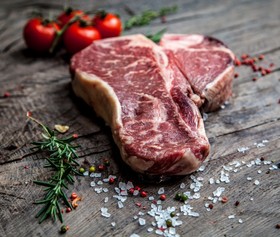
- SonRise Recommended Steak Rub
- 6 parts Himalayan Pink Salt (Reserve this - see note below)
- 4 parts Organic Paprika
- 2 parts Ground Pepper
- 1 part Organic Garlic Powder
- 1 part Organic Onion Powder
- ½ part Organic Coriander
- ½ part Organic Turmeric
Note: Salt tends to wick moisture. In order to avoid this we recommend coating the steak first, in the ingredients listed above without using the 6 parts salt. Then rest between 30 minutes and overnight. The salt should be added just prior to searing the steak (step 4 below)
1. Thaw and bring to room temperature. Do not cook a cold steak, or a warm steak - beginning temperature is very important.
2. You can submerge your vacuum sealed steak in a cold sink of water to thaw quickly, but only if the bag has a water tight seal - otherwise, water will seep into your bag and make your steak wet and soggy.
3. Melt Lard or Tallow in a very hot cast iron skillet on the stovetop, while simultaneously preheating your oven to 400 degrees.
4. Salt and if necessary season the steak - rub the seasonings in vigorously. This will help transfer the favor deep into the muscle. Just prior to the next step apply the reserved Salt to the exterior of the steak.
5. Sear the steak on very high heat (500 degrees or more) for 1 to 1:30 minutes each side. Look for a "crisp" crust on the steak. The room will fill with smoke, so be sure to have the overhead fan on. Have you ever driven by a steakhouse during dinnertime? The smoke is billowing out of the overhead vent. I usually open a door, so my wife doesn't come streaking down the stairs when the smoke alarm goes off...
6. Transfer the skillet to the oven (now at 360 degrees), or to a preheated Salt Block and cook as follows...
Rare 3 mins
Med 5 mins
Well (not recommended) 7 mins
*These numbers are for a average thickness steak (1 to 1.5") and may very slightly - experiment around by 15 seconds or so, and become an expert. It will be well worth your time.
**Hint - use a timer for this, and be very exact.
6. Cover in foil with reflective side towards steak. Crimp edges around plate. Rest for full 10 mins with no movement at all (you'll be tempted to look or cut - don't).
7. Cut against the grain and enjoy.

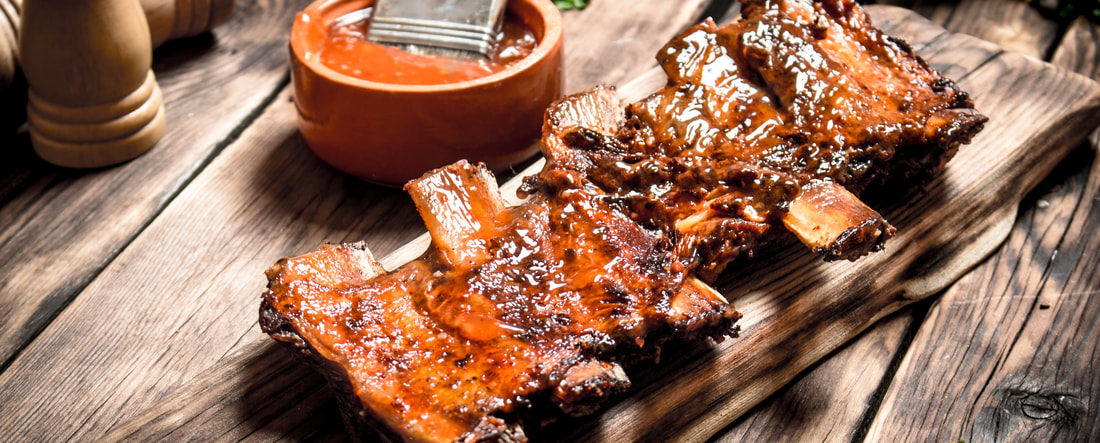

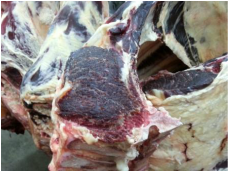
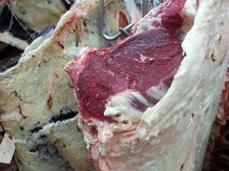
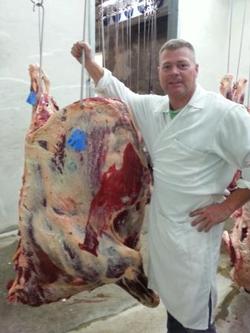
 RSS Feed
RSS Feed